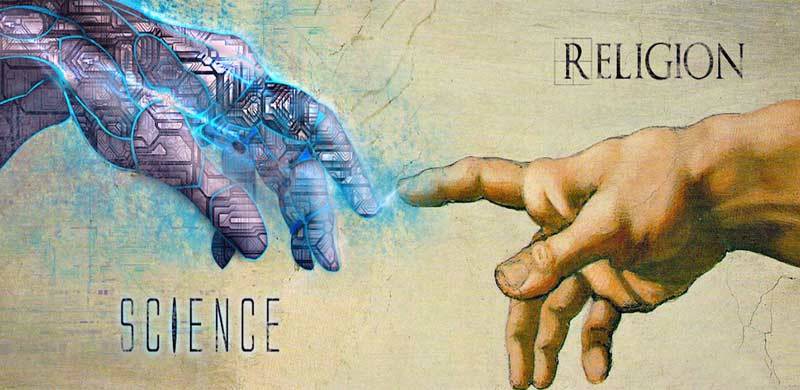
"Let science and faith be independent of each other. They do not need to interact nor clash. A fusion of both in a country like Pakistan will eventually see faith overwhelm science and become increasingly political and dogmatic. This is neither beneficial for faith nor to science", writes Nadeem Farooq Paracha.
In May this year, Prime Minister Imran Khan broke ground for Al-Qadir University of Sufism, Science and Technology in Sohawa. Speaking at the event, PM Khan said that the university will ‘link science and spirituality.’
He added that spirituality was a ‘super science’ requiring research. He said that the university will impart knowledge about Sufism and also modern technology. PM Khan then explained that this linking of spirituality (ruhaaniyat) and science will help the youth understand the whole concept of ‘the state of Madina’ (Madina ki Riyasat) — an idea of a perfect ‘Islamic welfare state’ that is being touted by the current PTI regime. To PM Khan this idea is directly linked to the original ‘ideology of Pakistan.’
This will not be the first such university in Pakistan. The PPP government (2008-2013) established the University of Sufism and Modern Sciences in Bhit Shah, home to the shrine of the 18th-century Sufi saint Shah Abdul Latif Bhittai.
Now a full-fledged campus, its stated vision is to ‘impart modern scientific knowledge and the education of Sufi saints which focuses on tolerance, harmony and brotherhood.’ The idea of this university was born from the concern that, over the decades, some rigid and even violent strands of the Muslim faith had permeated society and its education system. These needed to be neutralized by the study and proliferation of the faith’s more esoteric strands, such as Sufism, coupled with the modern sciences.
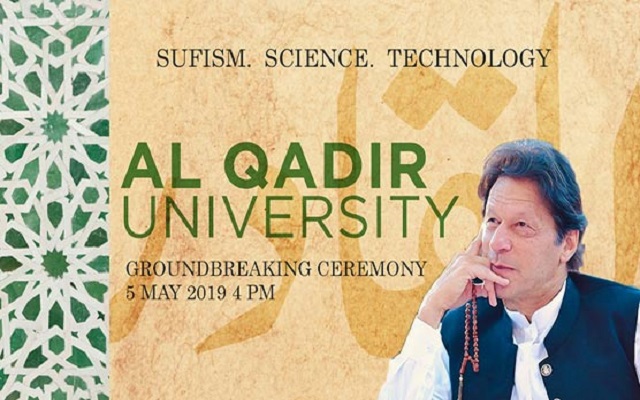
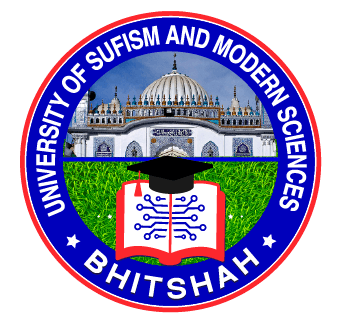
Even though such endeavors can be appreciated, I believe PM Khan wasn’t very lucid in his own mind about the core purpose of Al-Qadir University. He said he had been planning to build such a university for over 23 years, yet he sounded rather woolly about what it was that he wanted to achieve. In contrast to this, the university in Bhit Shah is clear about what it wants to achieve i.e. to encourage empirical thinking through the teaching of the modern sciences; and ethics and values derived from the works and examples of famous Sufi saints.
However, being a populist, PM Khan ended up muddling his own vision by unnecessarily politicizing the whole idea of imparting modern knowledge from the platform of Sufism. First of all, one just can’t see how Sufism is in any way linked to his patter about the ‘state of Madina’ or the so-called ‘ideology of Pakistan.’
The ‘state of Madina’ slogan — and it is nothing more than that — is derived from the musings of some particular segments of India’s Muslim community who supported the Pakistan Movement. But these segments were not present in the leadership circles of Mr Jinnah’s All India Muslim League (AIML).
Instead, these segments were largely made up of middle-class activists, madrasah students and teachers, imams of mosques and certain Muslim journalists and newspapers of northern India. Understanding the idea of Pakistan as a 20th-century reinvention of Islam’s first socio-political set-up in Madina was not on the minds of the country’s founders.
As demonstrated by Dr Markus Daechsel in his brilliant study of India’s urban middle class milieu in the first half of the 20th century, rhetorical proclamations about creating an Islamic utopia mostly originated from activist segments among urban middle-class Muslims. But the fact is, such proclamations were largely ignored by the AIML’s top leadership and intellectuals.
For example, in the 1930s, two young Islamic scholars, Abdus Sattar and Ibrahim Chishti, published a pamphlet called ‘Scheme.’ The pamphlet put forward the idea of a ‘Khuda Mard’ (or a Muslim Übermensch) who would defeat the forces of all other faiths and create an Islamic utopia.
Then there were Urdu newspapers, such as Inqilaab which kept harping on about the importance of creating a Muslim country which would re-enact the 7th century ‘Riyasat-i-Madina.’ These are but just two examples. Daechsel has furnished many more. But none were taken very seriously by the AIML. Instead, AIML’s top cadres were steeped in the ideas and works of thinkers such as Sir Syed Ahmad Khan, Syed Ameer Ali, Chiragh Ali and Allama Iqbal, who had worked to construct a ‘modernist’ strand of Islam which would navigate the faith’s future through science, reason and social and economic modernity.
PM Khan and his party seem to have adopted the Riyasat-i-Madina idea from the works and slogans of the milieu which Daechsel investigated in his book. More so, the conceptual (as opposed to empirical) notion of the ‘state of Madina’ was revitalized by an Indian intellectual and author Venkat Dhulipala in his 2015 tome Creating a New Medina.
Interestingly, the book became popular in Pakistan among various conservative outfits opposed to the ‘modernist’ version of Pakistan’s creation. American historian Gail Minault points out that Dhulipala’s book — which tries to justify the theological narrative behind Pakistan’s creation — ‘is not history from above or below but rather the middle.’ It largely ignores the ideas of the AIML’s top tier leadership and those associated with the Muslim masses. Instead, Dhulipala uses the ravings of the mentioned middle-class segments as his main source material. These segments were largely blanked out by AIML.
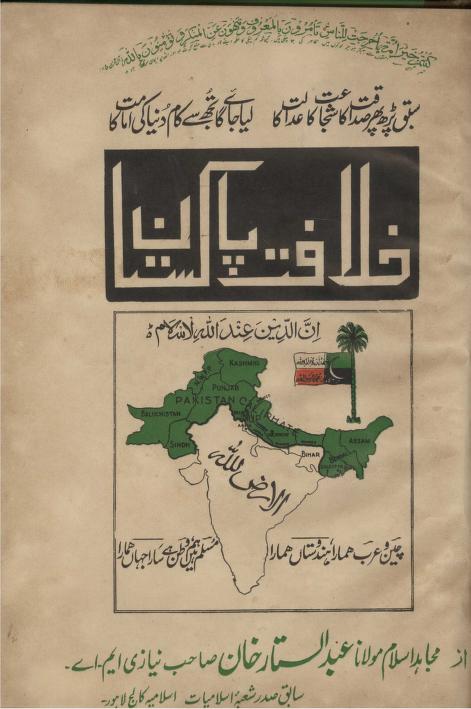
Riyasat-i-Madina has nothing to do with the ‘ideology of Pakistan’ either. Firstly, as historians such as Ayesha Jalal and Dr Mubarak Ali have demonstrated, the expression ‘ideology of Pakistan’ or the term ‘Pakistan ideology’ did not come into being till the early 1960s — more than a decade after Pakistan’s creation.
The founders used no such term. And even from when it was first coined by the Ayub Khan regime (1958-69) till the mid-1970s, this ‘ideology’ was driven by the whole idea of ‘Muslim Modernism’ initiated by Sir Syed and evolved by Iqbal. However, it became to mean something rigid and myopic after 1979 and eventually stagnant — even destructive.
PM Khan should avoid projecting his own misperception in this context on to his many impressionable young followers, whose minds are already muddled by the various experiments conducted by the state in the name of ideology. It should also be known that there is not one, but at least three strands of Sufism operating in Pakistan.
As Katherine Ewing (in Arguing Sainthood) and Alix Philippon (in State and Nation Building in Pakistan) have shown, there is one version of Sufism which was created by the state and exhibits Sufi saints as tolerant and passionate and law abiding men. Then there is a version created by the country’s pop culture which is basically an artistic variation of the state’s version. And then there is one held by radical Barelvi leaders who reject the state version of Sufism and bring it in line with their own not very tolerant and law-abiding version.
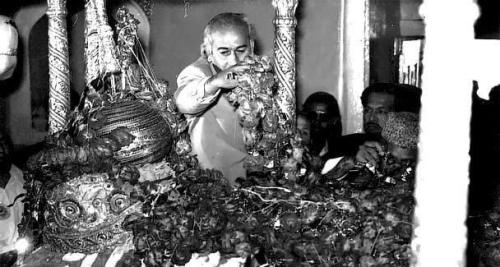
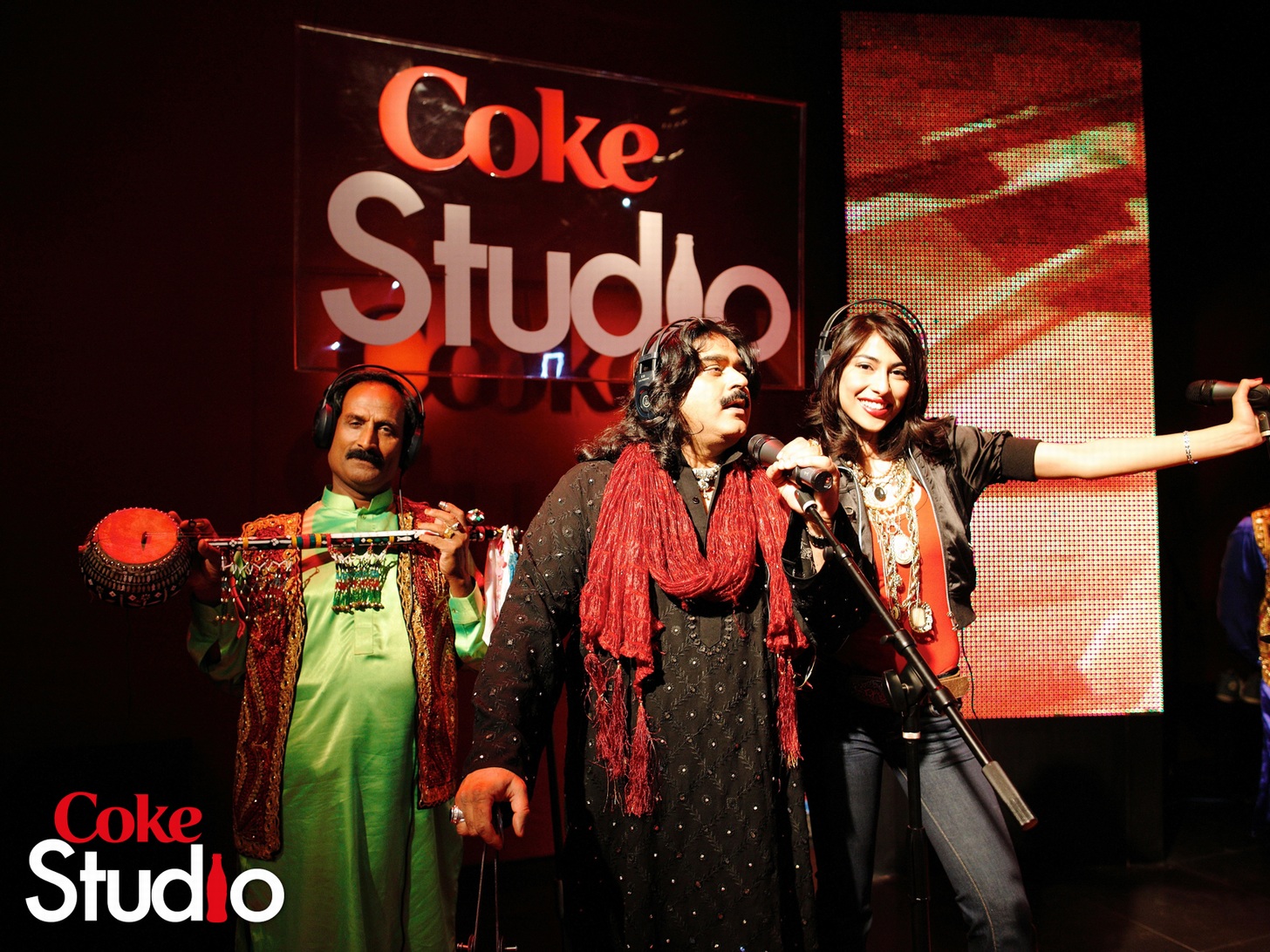
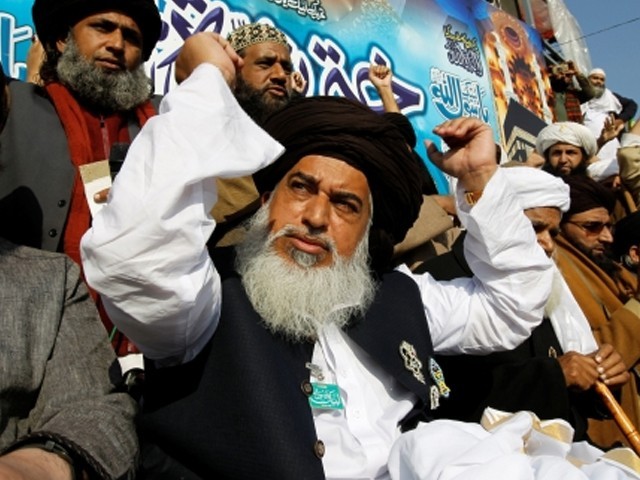
Let science and faith be independent of each other. They do not need to interact nor clash. A fusion of both in a country like Pakistan will eventually see faith overwhelm science and become increasingly political and dogmatic. This is neither beneficial for faith nor to science.
As a teenager in the early 1980s, I still remember a conversation I overheard between two cops posted just outside my grandfather’s office. It was in Punjabi and went something like this:
First cop: “Pakistan is about to make an atom bomb.”
Second cop: “No, I think we already have it.”
First cop: “Not yet, because I have heard we still do not have the atoms required to make the bomb.”
Second cop: “We do not have atoms?”
First cop: “No, they are on their way from China.”
Second cop: “Yes, China has a lot of atoms, that’s why America is against Pak-China friendship.”
First cop: “Yes, they do not want China to export atoms to Pakistan.”
Whenever I think about this conversation, I smile. These were simple police constables trying to talk nuclear physics. Lord knows what they thought atoms looked like. In all probability to them, atoms might be steely ball bearings that are fitted in a big metallic shell which when dropped from a plane, explodes.
However, what was funnier in this respect did not have to do with simple people, but so-called scientists. The following episode might have dissolved into history had not Dr. Pervez Hoodbhoy reminded us about it in his excellent first book, Islam and Science: Religious Orthodoxy and the Battle for Rationality.
In one of the chapters, Dr. Hoodbhoy tells us how in the mid-1980s, millions of rupees were dished out by certain oil-rich Arab countries and the Ziaul Haq dictatorship in Pakistan, to hold lavish seminars in Islamabad dedicated to celebrating (or worse, ‘prove’) the validity of ‘Islamic science.’
Before the late 1970s, ‘Islamic science’ often meant the exemplary works produced in the fields of mathematics, geometry, astronomy, chemistry, and philosophy by a number of noted Muslim academics and scholars between the 8th and 14th century CE. In other words, it was about science practiced by men who also happened to be Muslims.
By the late 1970s, however, the whole idea about ‘Islamic science’ began to disintegrate into utter farce. It largely began with a brainwave emitting from the Saudi monarchy. Suspicious that western education systems and models were producing free thinkers and secularists (or ideas that can threaten the theocratic basis upon which the monarchy’s power rested); and repulsed and alarmed by the growth of revolutionary nationalism and socialism in the Muslim world (in the ’60s and ’70s), the Saudi government began pumping in ‘petro dollars’ into programmes designed to bring Islamic thought at par with western science.
This wasn’t done by putting money into schools, colleges and universities in an attempt to upgrade and modernize their curriculum and teaching standards. Instead, the money went into hiring ‘scientists’ whose job it was to generate evidence that ‘secular/Western science and thought’ was inferior to ‘Islamic science.’
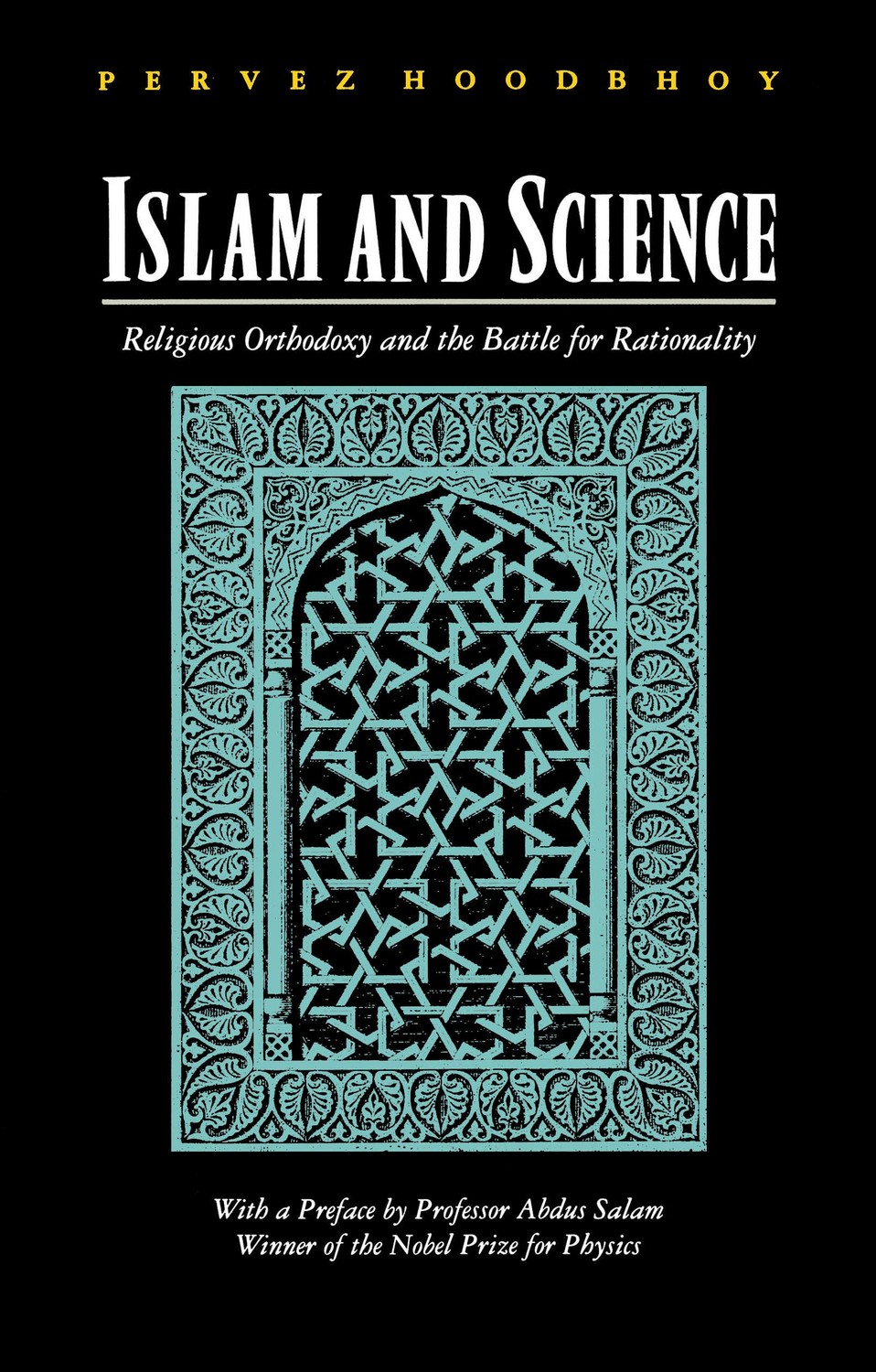
As a stream of handpicked Western, Pakistani and Arab scientists and doctors, lured in by the promise of big bucks and perks, began making their way into new-found institutions of ‘Islamic science’ in Saudi Arabia, nobody was quite sure as to what ‘Islamic science’ really was.
Famous cultural critic, author and scientist, Ziauddin Sardar, was one of them, but he soon bailed out after realizing that all the Saudis really wanted were ‘cranks masquerading as scientists.’
The 1977 publication of Maurice Bucaille’s The Bible, Qur’an and Science finally laid out exactly what the new concept of Islamic science meant. The book became a sensational hit in the Muslim world but at the same time left a number of Muslim scientists baffled by what Bucaille was suggesting. The book is a fascinating read. It claims that various scientific phenomena discovered by Western scientists in the 19th and 20th centuries had already been predicted and explained in Islam’s holy texts. One would sit up and take a little more notice of the claims made by Bucaille had he been a scientist, but he wasn’t.
Maurice Bucaille was a French medical doctor who in 1973 was appointed as the personal physician of Saudi monarch, King Faisal. Bucaille’s claims were based, not on empirical studies, but rather on his uncritical acceptance of certain Muslim beliefs based on the theology compiled by one of the most conservative ancient Muslim jurists, Imam Ahmed bin Hanbal and his disciples.
Bucaille faced stern criticism from both Western and Muslim scientists, especially Muslim scientists who accused him of misleading Muslim youth and encouraging them to shun the conventional study of modern sciences just because everything that they needed to know about physics, chemistry, astronomy, and biology was in the sacred texts.
They also suggested that the Quran was primarily a moral guide that actually persuades people to understand God’s world around them and that this can only be done by studying the sciences in labs.
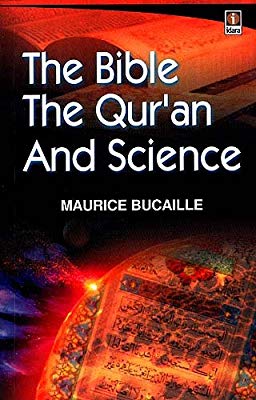
Even though Bucaille’s book is shaky and on a soft and uneven ground if and when put to test against the rigors of modern science, it set off a mind-altering change in the thinking of a majority of Muslims, as well as laying the foundations for a lucrative publishing and video market and industry in the Muslim world.
Impressed by the fantastical claims made by a French Christian doctor, very few Muslims were bothered by the fact that he was on the payroll of the Saudi monarchy. The idea was that if politics could be ‘Islamized’ (Maududi, Qutab, Khomeini), then so could science and economics. Grudgingly recognizing the economic and political advances made by the Jews after World War-II through education, the Arab world, tried to come up with their own notion of advancement.
But as mentioned before, this advancement was not really about producing large numbers of educated Muslims, but rather, a populace fed on empty, feel-good ‘scientific’ claptrap produced by overpaid groups of men and women calling themselves scientists and economists. And anyway, the new post-Bucaille Muslim mindset had already begun labeling the ‘secular sciences’ as ‘invented by Jews to subjugate the Muslims.’
The fact that many Hindu and Christian theologians had already laid claim to the practice of defining their respective holy books as metaphoric prophecies of a scientifically proven phenomenon, was conveniently ignored. They began doing this between the 18th and 19th centuries, whereas Muslims got into the act only in the 20th century.
JH Heinrich’s Scientific Vindication of Christianity (1887) and Mohan Roy’s Vedic Physics are two such examples exhibiting how this idea has actually evolved from the fantastical claims of the followers of other faiths.
In fact, the idea of claiming the presence of modern scientific phenomenon in ancient holy texts is actually gotten stronger in the BJP-ruled India. In 2015, some speakers at a conference held in Mumbai claimed, ‘pilots in ancient India were flying aircraft not only around the world, but from planet to planet …’
Many Indian scientists have flinched after hearing such claims. They lamented the attempt of some of their contemporaries to ‘mix mythology with science’ and at the ‘infiltration of pseudo-science in science curricula with the backing of influential (right-wing) political parties …’
In her 2016 book, Science in Saffron, microbiologist and prolific Indian author and historian of science, Meera Nanda wrote that in the long run, the dubious idea of mixing theology and mythology with science would produce a confused and intellectually lazy polity. Nanda tried to demonstrate that this idea and practice was actually the outcome of the late 1970s popularity of ‘post-modernism’ and ‘post-colonialism.’
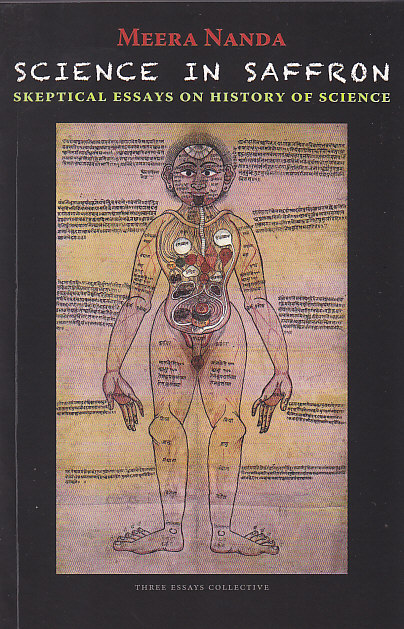
Since most critiques of these two ideas (post-modernism and post-colonialism) have often been criticized for maligning science, rationality and the concept of universal truth, Nanda points out that the spread of these two ideas to South Asia after the late 1970s, encouraged some to denounce conventional science as a ‘western construct.’
The Canadian philosopher, Stephen Hicks, in his 2004 book, Skepticism and Socialism: From Rousseau to Foucault wrote that post-modernism and post-colonialism claim to undermine universal scientific truths as ‘imperialist’ constructs to exercise power. These two ideas reject the concept of universality, claiming that myths believed in non-Western societies, no matter how irrational to science, contain truths as long as there were people believing in them.
Nanda laments that no matter how fallacious are the fantastical claims being made in the name of science by Hindu nationalists, the postmodern mindset is allowing the flow of such fallacies because if one challenges them as being unscientific, he or she runs into mobs denouncing them as being ‘colonial’ and ‘Western.’
In May this year, Prime Minister Imran Khan broke ground for Al-Qadir University of Sufism, Science and Technology in Sohawa. Speaking at the event, PM Khan said that the university will ‘link science and spirituality.’
He added that spirituality was a ‘super science’ requiring research. He said that the university will impart knowledge about Sufism and also modern technology. PM Khan then explained that this linking of spirituality (ruhaaniyat) and science will help the youth understand the whole concept of ‘the state of Madina’ (Madina ki Riyasat) — an idea of a perfect ‘Islamic welfare state’ that is being touted by the current PTI regime. To PM Khan this idea is directly linked to the original ‘ideology of Pakistan.’
This will not be the first such university in Pakistan. The PPP government (2008-2013) established the University of Sufism and Modern Sciences in Bhit Shah, home to the shrine of the 18th-century Sufi saint Shah Abdul Latif Bhittai.
Now a full-fledged campus, its stated vision is to ‘impart modern scientific knowledge and the education of Sufi saints which focuses on tolerance, harmony and brotherhood.’ The idea of this university was born from the concern that, over the decades, some rigid and even violent strands of the Muslim faith had permeated society and its education system. These needed to be neutralized by the study and proliferation of the faith’s more esoteric strands, such as Sufism, coupled with the modern sciences.


Even though such endeavors can be appreciated, I believe PM Khan wasn’t very lucid in his own mind about the core purpose of Al-Qadir University. He said he had been planning to build such a university for over 23 years, yet he sounded rather woolly about what it was that he wanted to achieve. In contrast to this, the university in Bhit Shah is clear about what it wants to achieve i.e. to encourage empirical thinking through the teaching of the modern sciences; and ethics and values derived from the works and examples of famous Sufi saints.
However, being a populist, PM Khan ended up muddling his own vision by unnecessarily politicizing the whole idea of imparting modern knowledge from the platform of Sufism. First of all, one just can’t see how Sufism is in any way linked to his patter about the ‘state of Madina’ or the so-called ‘ideology of Pakistan.’
The ‘state of Madina’ slogan — and it is nothing more than that — is derived from the musings of some particular segments of India’s Muslim community who supported the Pakistan Movement. But these segments were not present in the leadership circles of Mr Jinnah’s All India Muslim League (AIML).
Instead, these segments were largely made up of middle-class activists, madrasah students and teachers, imams of mosques and certain Muslim journalists and newspapers of northern India. Understanding the idea of Pakistan as a 20th-century reinvention of Islam’s first socio-political set-up in Madina was not on the minds of the country’s founders.
As demonstrated by Dr Markus Daechsel in his brilliant study of India’s urban middle class milieu in the first half of the 20th century, rhetorical proclamations about creating an Islamic utopia mostly originated from activist segments among urban middle-class Muslims. But the fact is, such proclamations were largely ignored by the AIML’s top leadership and intellectuals.
For example, in the 1930s, two young Islamic scholars, Abdus Sattar and Ibrahim Chishti, published a pamphlet called ‘Scheme.’ The pamphlet put forward the idea of a ‘Khuda Mard’ (or a Muslim Übermensch) who would defeat the forces of all other faiths and create an Islamic utopia.
Then there were Urdu newspapers, such as Inqilaab which kept harping on about the importance of creating a Muslim country which would re-enact the 7th century ‘Riyasat-i-Madina.’ These are but just two examples. Daechsel has furnished many more. But none were taken very seriously by the AIML. Instead, AIML’s top cadres were steeped in the ideas and works of thinkers such as Sir Syed Ahmad Khan, Syed Ameer Ali, Chiragh Ali and Allama Iqbal, who had worked to construct a ‘modernist’ strand of Islam which would navigate the faith’s future through science, reason and social and economic modernity.
PM Khan and his party seem to have adopted the Riyasat-i-Madina idea from the works and slogans of the milieu which Daechsel investigated in his book. More so, the conceptual (as opposed to empirical) notion of the ‘state of Madina’ was revitalized by an Indian intellectual and author Venkat Dhulipala in his 2015 tome Creating a New Medina.
Also read: National Identity Is a Political Project. Turning That Into a Religious Endeavour Does Not Work
Interestingly, the book became popular in Pakistan among various conservative outfits opposed to the ‘modernist’ version of Pakistan’s creation. American historian Gail Minault points out that Dhulipala’s book — which tries to justify the theological narrative behind Pakistan’s creation — ‘is not history from above or below but rather the middle.’ It largely ignores the ideas of the AIML’s top tier leadership and those associated with the Muslim masses. Instead, Dhulipala uses the ravings of the mentioned middle-class segments as his main source material. These segments were largely blanked out by AIML.

Riyasat-i-Madina has nothing to do with the ‘ideology of Pakistan’ either. Firstly, as historians such as Ayesha Jalal and Dr Mubarak Ali have demonstrated, the expression ‘ideology of Pakistan’ or the term ‘Pakistan ideology’ did not come into being till the early 1960s — more than a decade after Pakistan’s creation.
The founders used no such term. And even from when it was first coined by the Ayub Khan regime (1958-69) till the mid-1970s, this ‘ideology’ was driven by the whole idea of ‘Muslim Modernism’ initiated by Sir Syed and evolved by Iqbal. However, it became to mean something rigid and myopic after 1979 and eventually stagnant — even destructive.
PM Khan should avoid projecting his own misperception in this context on to his many impressionable young followers, whose minds are already muddled by the various experiments conducted by the state in the name of ideology. It should also be known that there is not one, but at least three strands of Sufism operating in Pakistan.
As Katherine Ewing (in Arguing Sainthood) and Alix Philippon (in State and Nation Building in Pakistan) have shown, there is one version of Sufism which was created by the state and exhibits Sufi saints as tolerant and passionate and law abiding men. Then there is a version created by the country’s pop culture which is basically an artistic variation of the state’s version. And then there is one held by radical Barelvi leaders who reject the state version of Sufism and bring it in line with their own not very tolerant and law-abiding version.



Let science and faith be independent of each other. They do not need to interact nor clash. A fusion of both in a country like Pakistan will eventually see faith overwhelm science and become increasingly political and dogmatic. This is neither beneficial for faith nor to science.
As a teenager in the early 1980s, I still remember a conversation I overheard between two cops posted just outside my grandfather’s office. It was in Punjabi and went something like this:
First cop: “Pakistan is about to make an atom bomb.”
Second cop: “No, I think we already have it.”
First cop: “Not yet, because I have heard we still do not have the atoms required to make the bomb.”
Second cop: “We do not have atoms?”
First cop: “No, they are on their way from China.”
Second cop: “Yes, China has a lot of atoms, that’s why America is against Pak-China friendship.”
First cop: “Yes, they do not want China to export atoms to Pakistan.”
Whenever I think about this conversation, I smile. These were simple police constables trying to talk nuclear physics. Lord knows what they thought atoms looked like. In all probability to them, atoms might be steely ball bearings that are fitted in a big metallic shell which when dropped from a plane, explodes.
However, what was funnier in this respect did not have to do with simple people, but so-called scientists. The following episode might have dissolved into history had not Dr. Pervez Hoodbhoy reminded us about it in his excellent first book, Islam and Science: Religious Orthodoxy and the Battle for Rationality.
In one of the chapters, Dr. Hoodbhoy tells us how in the mid-1980s, millions of rupees were dished out by certain oil-rich Arab countries and the Ziaul Haq dictatorship in Pakistan, to hold lavish seminars in Islamabad dedicated to celebrating (or worse, ‘prove’) the validity of ‘Islamic science.’
Before the late 1970s, ‘Islamic science’ often meant the exemplary works produced in the fields of mathematics, geometry, astronomy, chemistry, and philosophy by a number of noted Muslim academics and scholars between the 8th and 14th century CE. In other words, it was about science practiced by men who also happened to be Muslims.
By the late 1970s, however, the whole idea about ‘Islamic science’ began to disintegrate into utter farce. It largely began with a brainwave emitting from the Saudi monarchy. Suspicious that western education systems and models were producing free thinkers and secularists (or ideas that can threaten the theocratic basis upon which the monarchy’s power rested); and repulsed and alarmed by the growth of revolutionary nationalism and socialism in the Muslim world (in the ’60s and ’70s), the Saudi government began pumping in ‘petro dollars’ into programmes designed to bring Islamic thought at par with western science.
This wasn’t done by putting money into schools, colleges and universities in an attempt to upgrade and modernize their curriculum and teaching standards. Instead, the money went into hiring ‘scientists’ whose job it was to generate evidence that ‘secular/Western science and thought’ was inferior to ‘Islamic science.’

As a stream of handpicked Western, Pakistani and Arab scientists and doctors, lured in by the promise of big bucks and perks, began making their way into new-found institutions of ‘Islamic science’ in Saudi Arabia, nobody was quite sure as to what ‘Islamic science’ really was.
Famous cultural critic, author and scientist, Ziauddin Sardar, was one of them, but he soon bailed out after realizing that all the Saudis really wanted were ‘cranks masquerading as scientists.’
The 1977 publication of Maurice Bucaille’s The Bible, Qur’an and Science finally laid out exactly what the new concept of Islamic science meant. The book became a sensational hit in the Muslim world but at the same time left a number of Muslim scientists baffled by what Bucaille was suggesting. The book is a fascinating read. It claims that various scientific phenomena discovered by Western scientists in the 19th and 20th centuries had already been predicted and explained in Islam’s holy texts. One would sit up and take a little more notice of the claims made by Bucaille had he been a scientist, but he wasn’t.
Maurice Bucaille was a French medical doctor who in 1973 was appointed as the personal physician of Saudi monarch, King Faisal. Bucaille’s claims were based, not on empirical studies, but rather on his uncritical acceptance of certain Muslim beliefs based on the theology compiled by one of the most conservative ancient Muslim jurists, Imam Ahmed bin Hanbal and his disciples.
Bucaille faced stern criticism from both Western and Muslim scientists, especially Muslim scientists who accused him of misleading Muslim youth and encouraging them to shun the conventional study of modern sciences just because everything that they needed to know about physics, chemistry, astronomy, and biology was in the sacred texts.
They also suggested that the Quran was primarily a moral guide that actually persuades people to understand God’s world around them and that this can only be done by studying the sciences in labs.

Even though Bucaille’s book is shaky and on a soft and uneven ground if and when put to test against the rigors of modern science, it set off a mind-altering change in the thinking of a majority of Muslims, as well as laying the foundations for a lucrative publishing and video market and industry in the Muslim world.
Impressed by the fantastical claims made by a French Christian doctor, very few Muslims were bothered by the fact that he was on the payroll of the Saudi monarchy. The idea was that if politics could be ‘Islamized’ (Maududi, Qutab, Khomeini), then so could science and economics. Grudgingly recognizing the economic and political advances made by the Jews after World War-II through education, the Arab world, tried to come up with their own notion of advancement.
But as mentioned before, this advancement was not really about producing large numbers of educated Muslims, but rather, a populace fed on empty, feel-good ‘scientific’ claptrap produced by overpaid groups of men and women calling themselves scientists and economists. And anyway, the new post-Bucaille Muslim mindset had already begun labeling the ‘secular sciences’ as ‘invented by Jews to subjugate the Muslims.’
The fact that many Hindu and Christian theologians had already laid claim to the practice of defining their respective holy books as metaphoric prophecies of a scientifically proven phenomenon, was conveniently ignored. They began doing this between the 18th and 19th centuries, whereas Muslims got into the act only in the 20th century.
JH Heinrich’s Scientific Vindication of Christianity (1887) and Mohan Roy’s Vedic Physics are two such examples exhibiting how this idea has actually evolved from the fantastical claims of the followers of other faiths.
In fact, the idea of claiming the presence of modern scientific phenomenon in ancient holy texts is actually gotten stronger in the BJP-ruled India. In 2015, some speakers at a conference held in Mumbai claimed, ‘pilots in ancient India were flying aircraft not only around the world, but from planet to planet …’
Many Indian scientists have flinched after hearing such claims. They lamented the attempt of some of their contemporaries to ‘mix mythology with science’ and at the ‘infiltration of pseudo-science in science curricula with the backing of influential (right-wing) political parties …’
In her 2016 book, Science in Saffron, microbiologist and prolific Indian author and historian of science, Meera Nanda wrote that in the long run, the dubious idea of mixing theology and mythology with science would produce a confused and intellectually lazy polity. Nanda tried to demonstrate that this idea and practice was actually the outcome of the late 1970s popularity of ‘post-modernism’ and ‘post-colonialism.’

Since most critiques of these two ideas (post-modernism and post-colonialism) have often been criticized for maligning science, rationality and the concept of universal truth, Nanda points out that the spread of these two ideas to South Asia after the late 1970s, encouraged some to denounce conventional science as a ‘western construct.’
The Canadian philosopher, Stephen Hicks, in his 2004 book, Skepticism and Socialism: From Rousseau to Foucault wrote that post-modernism and post-colonialism claim to undermine universal scientific truths as ‘imperialist’ constructs to exercise power. These two ideas reject the concept of universality, claiming that myths believed in non-Western societies, no matter how irrational to science, contain truths as long as there were people believing in them.
Nanda laments that no matter how fallacious are the fantastical claims being made in the name of science by Hindu nationalists, the postmodern mindset is allowing the flow of such fallacies because if one challenges them as being unscientific, he or she runs into mobs denouncing them as being ‘colonial’ and ‘Western.’
